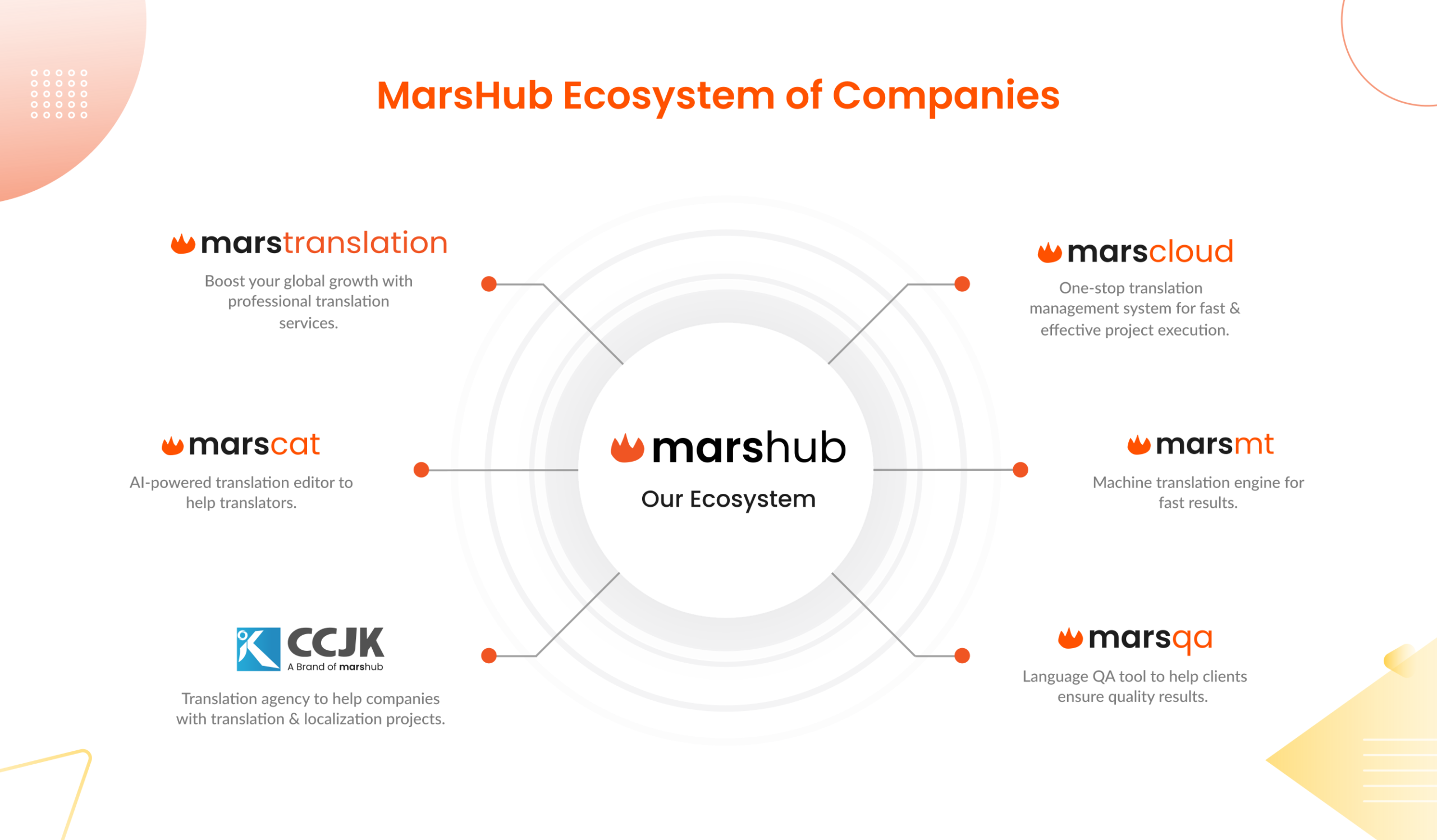The translation industry is growing at a rapid rate. Even when the world was suffering from the pandemic (COVID-19), the translation and localization industry curve continued to move upward. It is indeed a billion-dollar industry, especially with the increasing trends of globalization, more businesses are moving towards localizing their brand and translating their content to effectively communicate with overseas customers.
Translation services are high in demand and businesses are looking for the top language service providers to make their globalization journey seamless and hassle-free. This blog post discusses the latest developments, trends, and future forecasts in the translation industry.
Evaluating Translation and Localization Industry
For any business that wants to increase its customer base and capture higher market shares in global markets, it is essential to get into the waters of translation and localization. Businesses should have sufficient knowledge of translation industry trends, developments, and predictions to stay relevant and make better localization strategies.
Translation Industry Overview
The translation industry is playing a major role in connecting global businesses with their target customers in foreign markets. Despite an economic slowdown during the COVID-19 pandemic, the translation industry continued to grow. Not just that you have seen many technological developments happening in terms of MT tools, TMS systems, and the use of AI to produce translations. Currently, there is high demand in the industry for professional language service providers and expert linguists. Translation agencies use modern techniques, tools, and methods to achieve high translation accuracy and help businesses achieve their globalization goals.
Market Size
The need for businesses to eliminate language barriers increases the demand for professional translation services. It is also a major reason behind the translation industry’s growth. The global translation service industry is valued at around $40 billion and is projected to reach USD 46.22 Billion by 2028. Europe holds 49%, almost half, of the overall global translation market. Around 85% of the overall market share of global translation services market share is held by small and mid-sized companies. It means the rest of the 15% is owned by big leading companies in the translation industry.
According to the search conducted by Market Research Future, even during COVID-19, the translation market grew by 40%. Considering the current market size and insights, the future of the translation industry seems bright.
What Are the Latest Developments in the Translation Industry?
1. Neural Machine Translation
The rise of neural machine translation technology has revolutionized the translation industry. The NMT technology has paved the way for many latest translation technologies and tools that we use today to achieve higher work efficiency. Google is a leading translation engine that also uses NMT networks to generate quick translations with good accuracy. Neural machine translation models are the most recent version of all language processing models used for translation purposes. NMT engine works through an encoder and one decoder network, and it uses large databases with very little supervision to produce translations.
2. Automated Translation Tools
There are many paid and open-source translation tools available in the market, used by companies to generate content translations for their global business. The demand for automated translation tools is also increasing to meet the growing need for speedy translation. The automated translation tools generate quick translation at a relatively much lower cost than human translators. They allow businesses and LPSs to effectively manage their high volumes of translations faster. These tools typically use large datasets and powerful AI algorithms to generate high-quality, clear, and accurate translations for overseas audiences.
3. Translation Management Systems
If you are a professional language service provider, you must know how hard it is to manage a translation project. Especially, if you are targeting multiple regions simultaneously. The need for effective translation project management leads to the development of a professional translation management system that comes with advanced features to support your everyday translation management operations. Contemporary translation management tools come with smart functionalities and AI technology to achieve higher work efficiency. Businesses can customize the specifications of the TMS tools as per their unique translation project needs. You may find many TMS companies offering multiple features under one umbrella to fulfill your translation needs, MarsCloud offers one of the most comprehensive suites of cloud-based translation and localization management tools.
4. Terminology Management Tools
When you are managing translations for multiple regions, terminology management is an important thing to consider. Effective terminology management is essential for keeping your brand voice consistent in every region. Companies that have to work with multiple translators, scattered around the globe, feel the need to have a proper brand glossary to send their translators along with other requirement guidelines and work references. The need for terminology management tools is increasing because of their ability to effectively and quickly create and manage brand glossaries.
5. Artificial Intelligence
Over the past few years, AI has had a huge influence on translation technology, from machine translation engines to CAT tools. Powerful AI algorithms have enabled translation companies to generate smart TMS and MT tools that have the ability to outperform human translators. If not all, there are quite a few reliable tools in the market that literally provide good enough translation results that it is hard to tell it is not generated by humans but by machines. The use of AI models reduces human intervention and supervision in translation management operations. These tools also have the ability to generate accurate and quick translations more cost-effectively. AI indeed played a powerful role in transforming the translation industry and allowed LSPs and global enterprises to optimize their translation processes to achieve desired outcomes.
Translation and Localization Industry Trends and Future Forecast
1. Growth of Transcreations and Localization Services
The demand for professional translation and localization services is higher than ever before. Global businesses have started taking translations seriously, and they prefer hiring from the top language service provider companies to do this complex job. Instead of assembling an internal team, businesses keep their translation management hassle-free by outsourcing their translation processes to third-party service providers. This way, businesses can effectively manage their translation project without overburdening themselves.
2. The Emergence of Multilingual SEO Strategies
To make their businesses visible in a foreign market, companies are investing in multilingual SEO strategies. Doing SEO for the domestic market is not enough because Google as well as other famous search engines show different search results for every geographical region. It makes it essential for global businesses to conduct separate keyword research for each target market depending on the language people speak and phrases they are more likely to use to search for your products and services online.
3. Use of Machine Translation Post-Editing Method
Today, businesses believe in combining human linguistic expertise with the latest technology to achieve the best results. Machine translation post-editing is a translation generation method in which translations are produced by an MT and proofread by an expert human translator afterward, to ensure relevance and accuracy. This translation generation method is becoming more common these days because of its cost-effectiveness and ability to deliver quick translation with the best accuracy and relevance to the original context of the message.
4. Increasing Freelance Translator Demand
There is a high demand for experienced freelance translators worldwide. Remote work is becoming a norm, especially in the writing and translation fields. Companies prefer working with overseas native translators who are fluent in both source and target languages. Instead of assembling an in-house team, hiring freelance translators is not just cost-effective but also helps businesses generate premium quality translations for every region. An LSP can hire native resources for each translation project separately, and there’s absolutely no need to hire excessive staff.
5. High Demand for Multilingual Customer Support
When it comes to stepping into a foreign market, it is not just about providing the best products or services to the customers. You must make the overall buying journey of your customers seamless. Good customer support is the key to optimized customers’ buying experience. If you are targeting a foreign market then providing multilingual customer support to your target customers is a must. For this, you may need to hire a customer support team who is fluent in both source and target languages. So, they’ll be able to help your customers properly with their concerns and issues.
6. Demand For Multilingual Content in E-Commerce And E-Learning Sectors
Some markets like e-commerce and e-learning platforms are booming, and are expected to grow continuously over the coming years. Especially after COVID-19, online educational platforms and online shopping stores got the spotlight. Whether e-commerce sites or e-learning platforms, the need for multilingual content is always there if you want to target a larger customer base. Similarly, other sectors like video games continue to grow and also demand professional subtitle translations and dubbing. Global companies now seem more passionate about creating a multilingual brand presence to attract the masses around the globe.
7. Integration of AI And Machine Translation Technologies
When we talk about advancement in the translation industry, the use of artificial intelligence and MT technology is the most dominant change factor. In the future, we can expect AI technology and MT systems integrations in most translation tools for better work efficiency and speed. AI intervention in the TMS tools aims to reduce human supervision and influence the overall translation process. It would help translation companies and other global enterprises to make translation operations independent of human translation. Doing this will also lead to better cost management and faster turnaround time.
Summing Up!
Running a global business is no longer a far-fetched idea, especially if you have the right tools, knowledge, and techniques in place. Translation and localization play a significant role in helping businesses have a smooth and successful entry into foreign markets. The rising demand for translation services is also an indicator that the translation industry market size will continue to increase. Evaluating different aspects of the translation industry will help you understand the major trends and developments in the sector. Moreover, you are more likely to take full advantage of the opportunities coming your way in the future with all the technological advancements the translation industry is witnessing right now.



